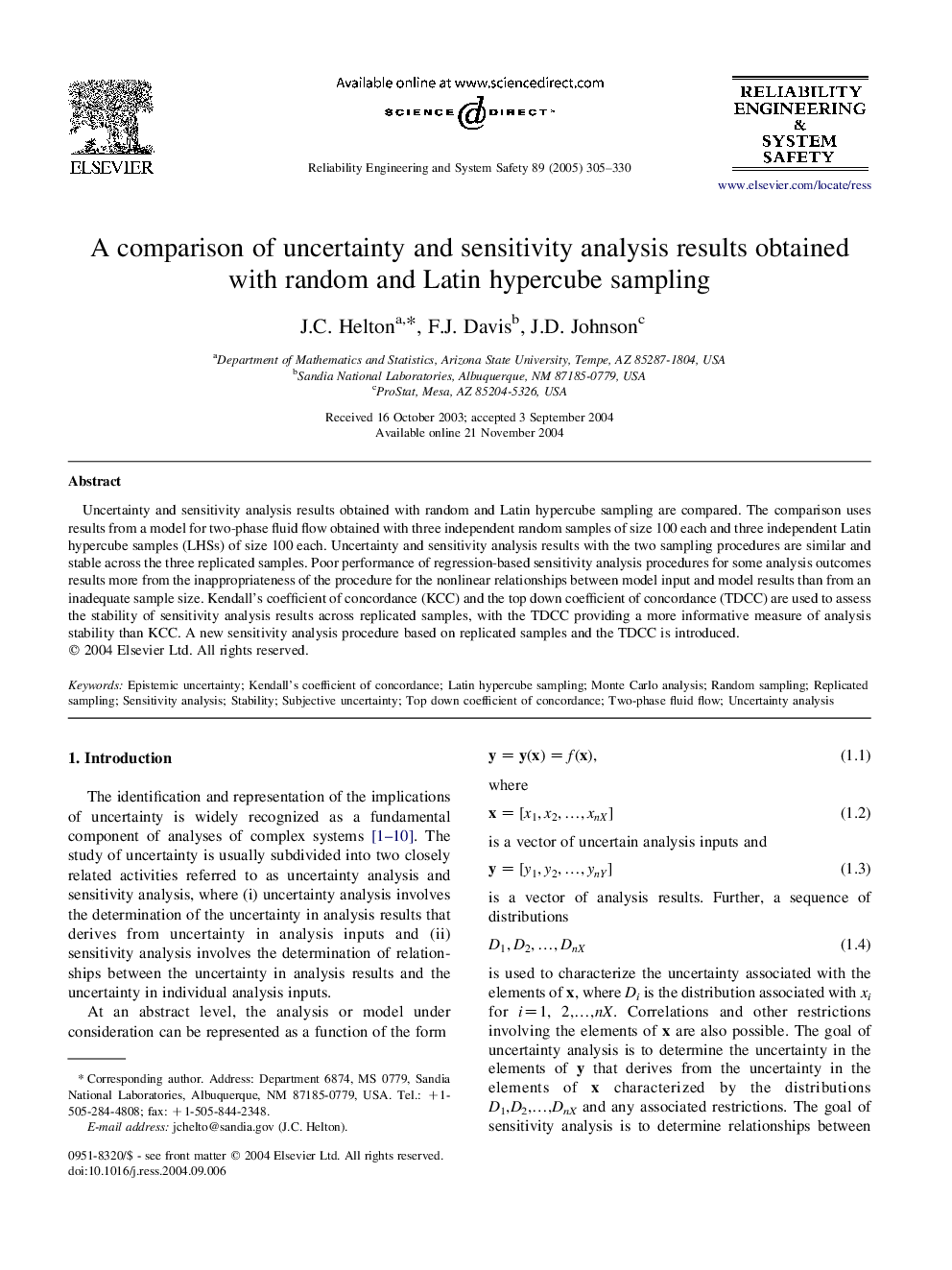| Article ID | Journal | Published Year | Pages | File Type |
|---|---|---|---|---|
| 10420959 | Reliability Engineering & System Safety | 2005 | 26 Pages |
Abstract
Uncertainty and sensitivity analysis results obtained with random and Latin hypercube sampling are compared. The comparison uses results from a model for two-phase fluid flow obtained with three independent random samples of size 100 each and three independent Latin hypercube samples (LHSs) of size 100 each. Uncertainty and sensitivity analysis results with the two sampling procedures are similar and stable across the three replicated samples. Poor performance of regression-based sensitivity analysis procedures for some analysis outcomes results more from the inappropriateness of the procedure for the nonlinear relationships between model input and model results than from an inadequate sample size. Kendall's coefficient of concordance (KCC) and the top down coefficient of concordance (TDCC) are used to assess the stability of sensitivity analysis results across replicated samples, with the TDCC providing a more informative measure of analysis stability than KCC. A new sensitivity analysis procedure based on replicated samples and the TDCC is introduced.
Keywords
Related Topics
Physical Sciences and Engineering
Engineering
Mechanical Engineering
Authors
J.C. Helton, F.J. Davis, J.D. Johnson,
